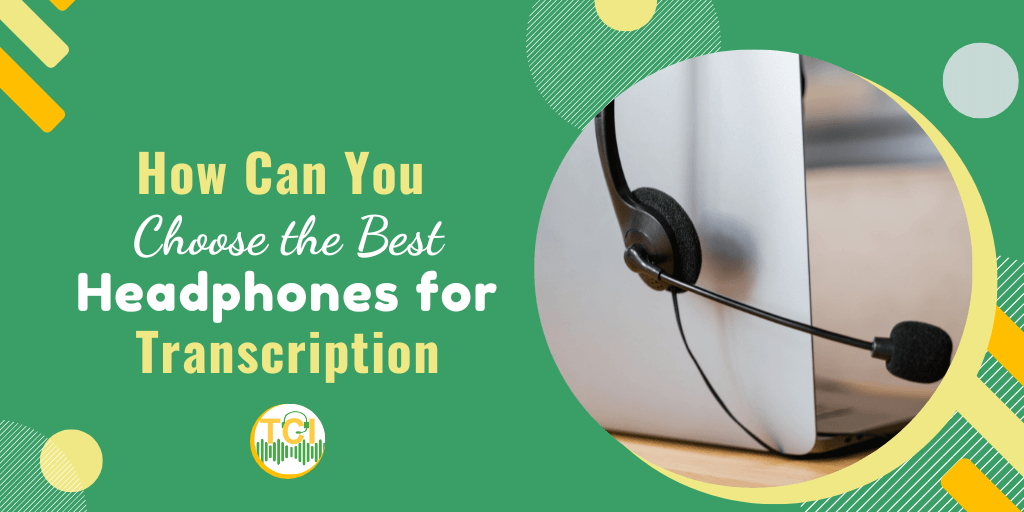
With global transcription, an industry projected to grow in revenue from US$ 1.68 billion in 2021 to US$ 3.71 billion by 2031, transcriptionists have endless opportunities. However, with opportunities come challenges and competition. You may have the best transcription skills, but to overcome your competitors, you also need to have the best resources at your disposal. And when we talk about resources, headphones are one of the transcriptionist’s biggest weapons.
A good set of transcription headphones may make difficult audio seem clearer, increasing your productivity while reducing the number of mishears or "unclear" in your transcripts. This can result in more satisfied customers and greater hourly earnings. However, just like apparel, headphones are also subjective. What may be comfortable for others may not be for you. Hence, choosing the best transcription headphones per your specific needs is important.
Getting a comfortable pair of transcription headsets is most important. Having a headphone that puts a strain on your neck, ears, or head can make your transcription work feel like ages. Choose a headphone that fits your head, isn’t too heavy, and is comfortable around your neck and ear, allowing you to fully concentrate on transcribing.
Just like for any other product, price is a very important consideration you must make. You should start with creating a budget and then search for transcription headphones accordingly. You should also look at the price/quality ratio. Expensive always doesn’t mean better quality, so compare the features of every headphone and then come to a decision.
Your working environment is an important factor in deciding which headphones you need. If you work in a crowded or public place, you may need noise cancellation headphones for transcription. However, if you work alone at your home, you may go for on-ear or over-ear headphones.
Different headphones come with different connection types. A lot of people don’t like traditional wired headphones for mobility limitations. However, if you don’t like to move around and constantly work in one place, then you may choose wired over wireless. Wired headphones also have different types – USB, Type-C, and jack pin. You must choose the one which fits your computer specs.
This is the most technical parameter of judging headphones and is often a prime differentiator between good and great headphones. The human ear can hear sounds from a frequency of 20 Hz to 20KHz, and each headphone has a different frequency response designed for different purposes. A perfect transcription headphone must have a receiving frequency range of 10Hz to 20KHz.
As per your needs, you can choose any of the following types of headphones for transcription:
In-ear headphones are affordable wired headphones with small drivers that fit directly into your ear canal. Earbuds are the wireless version of in-ear headphones having smaller drivers covered with silicon lobes. These headphones are great for noise cancellation but can be highly uncomfortable, especially when using them for a long time.
On-ear headphones are worn over the earlobe. They have better noise cancellation and are more comfortable than in-ear headphones. These are better for people who sweat a lot, but they are less comfortable than over-ear headphones. They can also harm your earlobes if they are overly tight.
Over-ear headphones have cushioned earcups that fit over the ear, making them highly comfortable. They don't have very high noise cancellation, so if you plan to transcribe in a noisy place (say, near a loud fan), quite a bit of sound will get through. However, they are the best choice when working in a quiet environment.
We all have faced problems with wires at some point – they often get tangled in chairs or around our necks. Wired headphones also limit our ability to move around while transcribing. Wireless headphones eliminate these problems allowing you to get immersed in the audio while transcribing. However, these headphones are not as durable as their wired counterparts and might need recharging often. Wireless headphones also come in different varieties, such as neckband and bone conduction headphones, besides a range of wireless earbuds.
There are headphones designed for specific purposes. This includes consumer headphones for gaming, movies, music, etc., and studio headphones for professional work. Special headphones are also designed for transcriptionists. These headphones include inline volume control, tuned frequency, longer cable, stethoscope design (good for medical transcription), stereo/mono switch, and USB plug. These headphones are usually sold with a transcription foot pedal and are quite expensive.
Headphones provide a lot of benefits to transcriptionists helping them smoothly transcribe the audio/video file. However, when you are contemplating buying a headphone for transcription, you need to take certain things like price, design, frequency, and connection type into account. Before purchasing the headphones, it is also important to understand their key features so that you may make the most informed decision possible. We all are different in our own ways, and so is our definition of comfort. So, choose the best headphones according to your needs.
How To Get Started As A Transcriptionist - A Complete Guide [Part 1]
Your TRANSCRIPTION CAREER CAPSULE to Help You BOOST Your Potential
Latest Industry News, Jobs, Tips and More..

Comments are closed